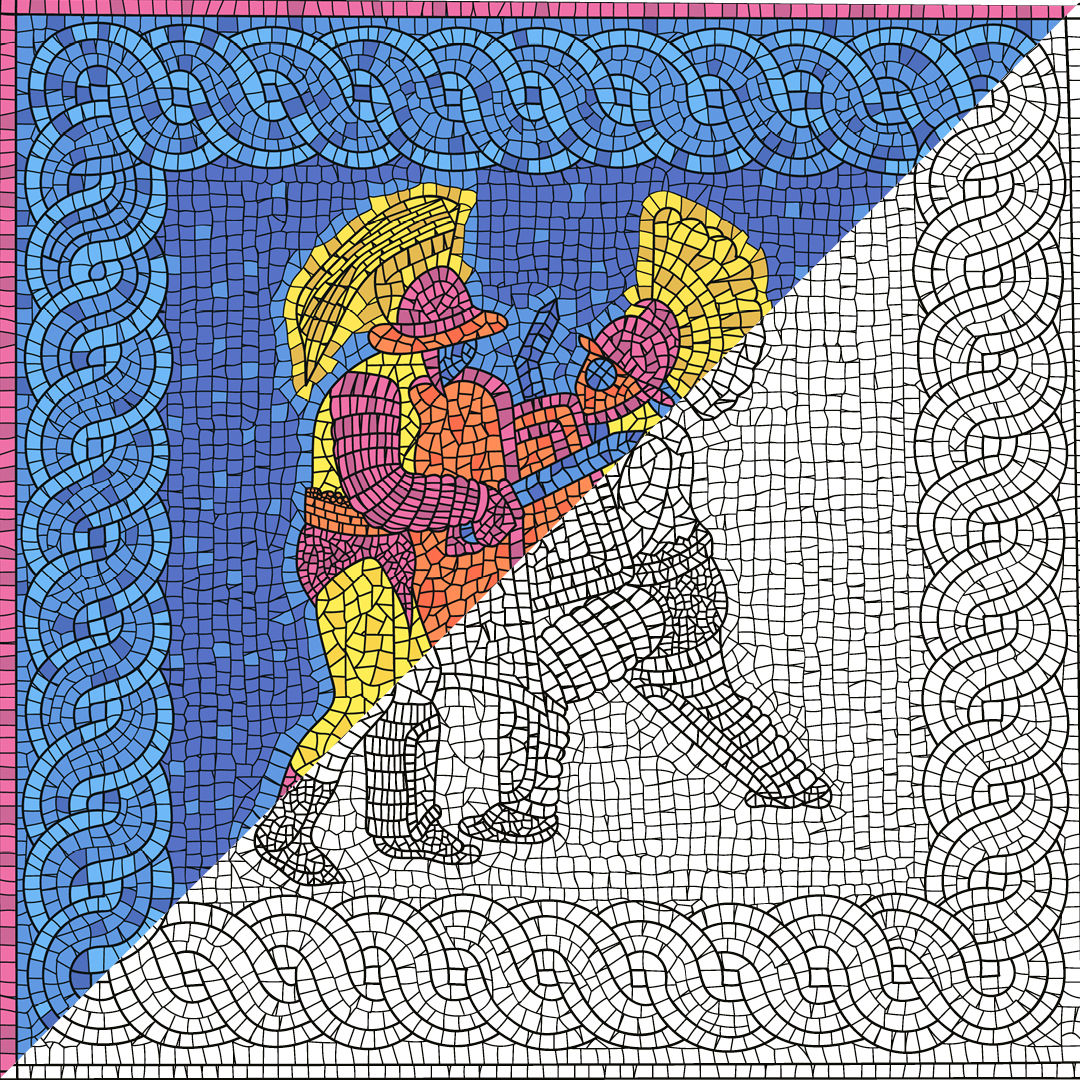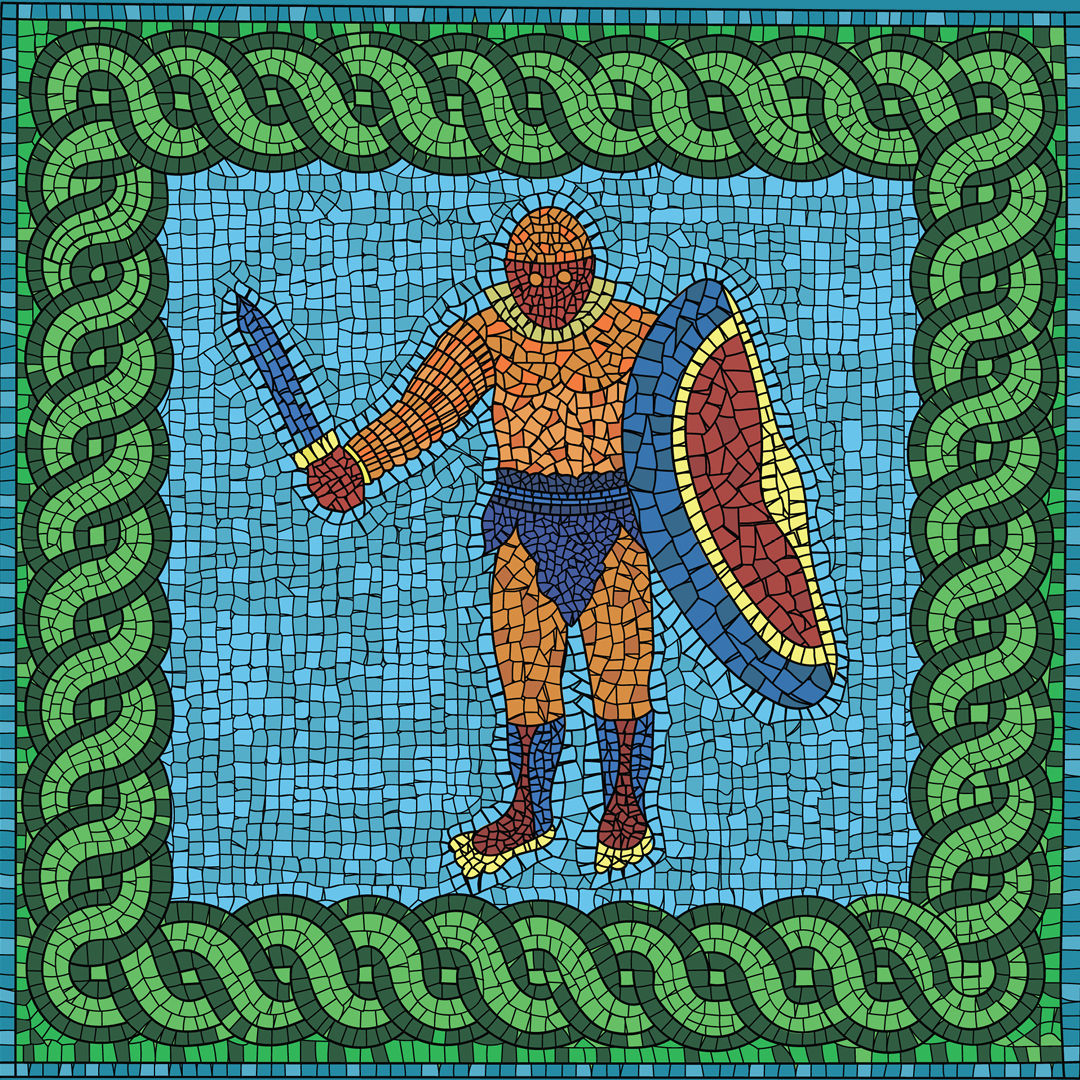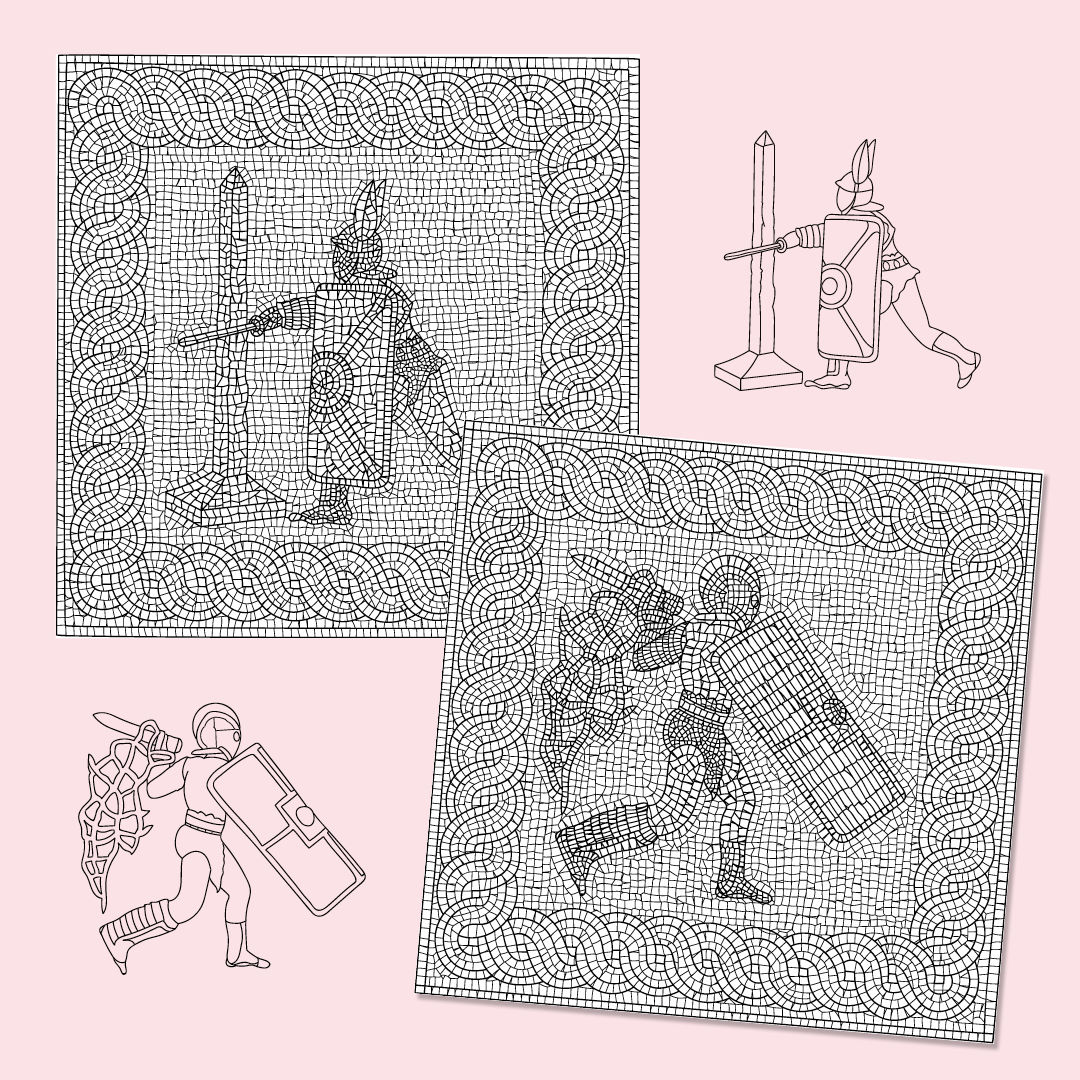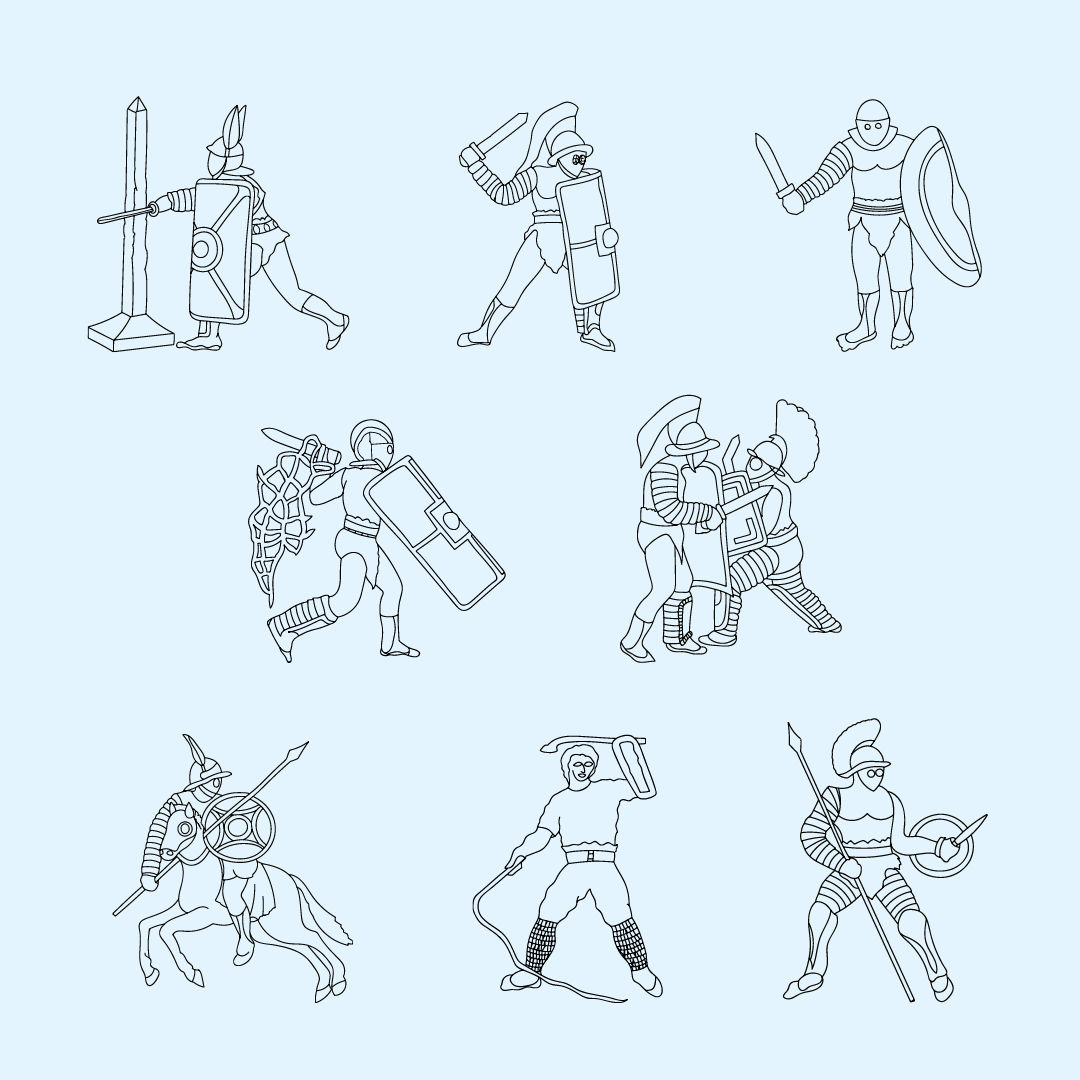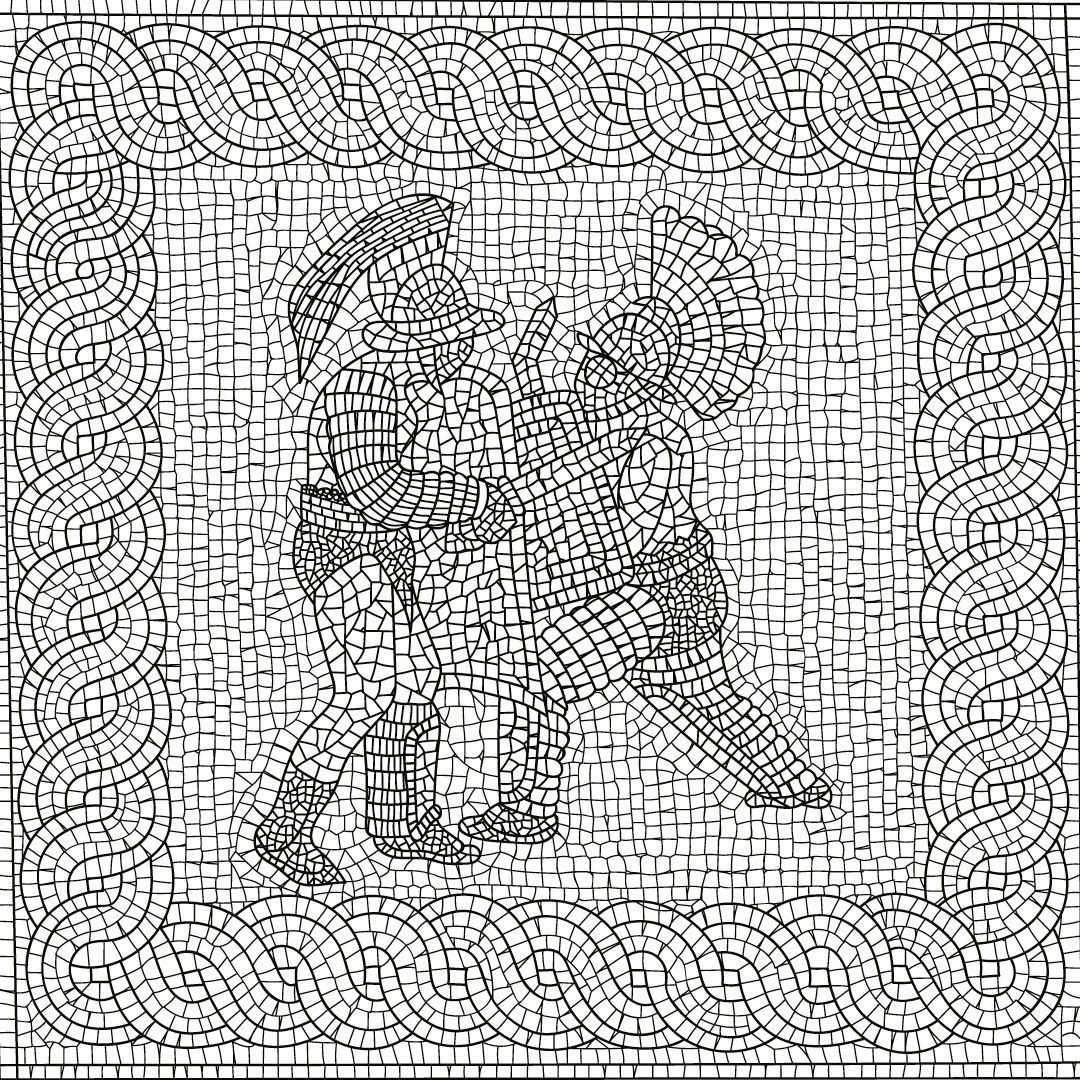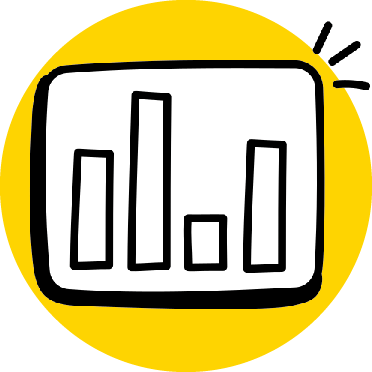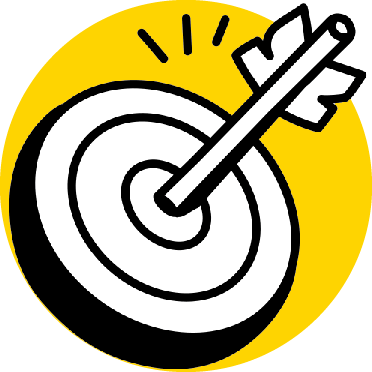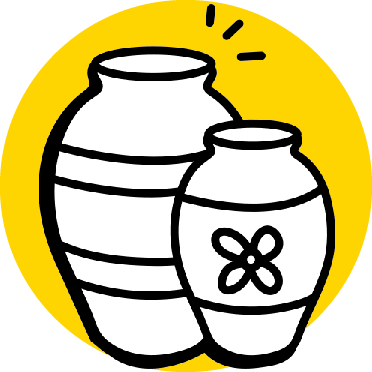How can I use this resource?
With this resource, you can discover the fascinating world of Roman gladiators. You can color 16 historical templates of different gladiator types and their weapons. You can also work in groups to create large posters of the mosaics by combining four sheets of paper. This is a great way to practice teamwork and communication skills. It is also a way to learn about the culture and history of ancient Rome. You can use this resource to decorate your classroom, or bulletin board with colorful and interesting images of Roman gladiators.
What does this resource contain?
This resource contains 16 historical templates for coloring Roman gladiators, such as Palus, Eques, Murmillo, Secutor, Essedarius, Hoplomachus, Paegniarius, and Murmillo and Thracian in single combat. Each template has a mosaic pattern that is based on a depiction on a tombstone, a fresco, or a mosaic. The mosaics are slightly modified versions of the original depictions to make them easier to color for kids. Each mosaic comes in two versions: a single image and a poster consisting of four sheets. You can print the templates on white paper and color them with crayons, markers, pencils, or paints. The resource also provides you with some information about the origin and meaning of each gladiator type and their weapons.
Who were the gladiators and why did they fight?
Gladiators were professional fighters in ancient Rome - warriors who fought against each other in public events. The word gladiator comes from the Latin word ‘gladius,’ which means ‘sword’. Along with chariot races, theatrical performances, and animal fights, gladiator fights were an integral part of the entertainment program in Rome. The emperors, whose motto was „bread and games“, made themselves especially popular with the citizens by staging gladiator fights. The majority of gladiators were slaves, prisoners of war or convicted criminals. A gladiator battle was a fight to the death. The ancient Romans loved this kind of cruel entertainment. Gladiators didn’t just swing their swords about wildly, as is often depicted in the movies. Gladiators had to use their physical strength sparingly and cleverly, otherwise they had no chance of survival. For this they were trained to fight in the arena in gladiator schools. If they were lucky and stayed alive for long enough, they were sometimes even given back their freedom. Over the centuries, several gladiatorial styles developed in Rome, each of which varied in their equipment and fighting technique.
Learn about the ancient Roman gladiators and their fights with this resource. You can also work in groups to create large posters of the mosaics.
Labbé GmbH
Walter-Gropius-Str. 16
50126 Bergheim
Germany
hello@labbeasy.com
Mosaics - Roman Gladiators
Learn about the ancient Roman gladiators and their fights with this resource. You can also work in groups to create large posters of the mosaics.

